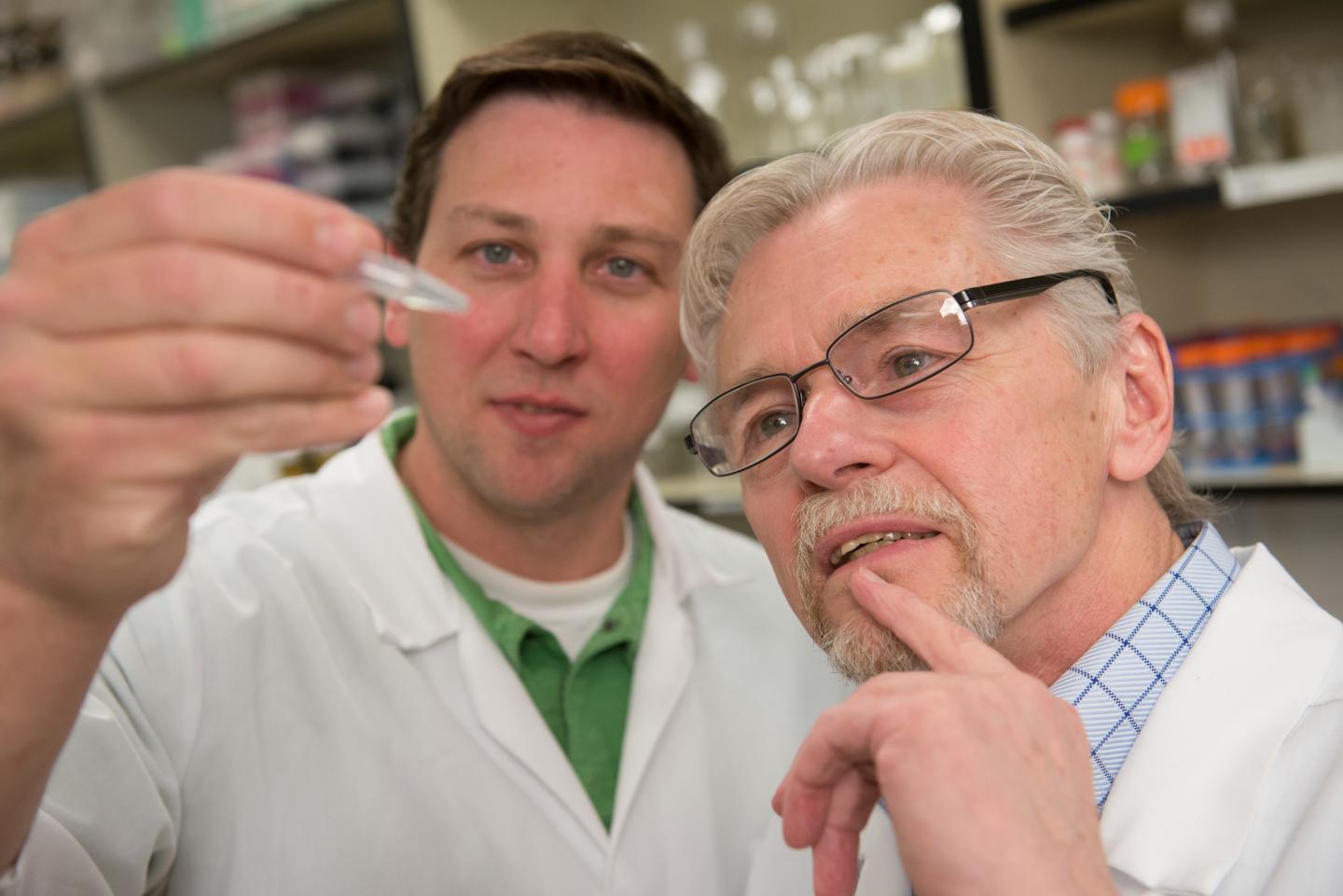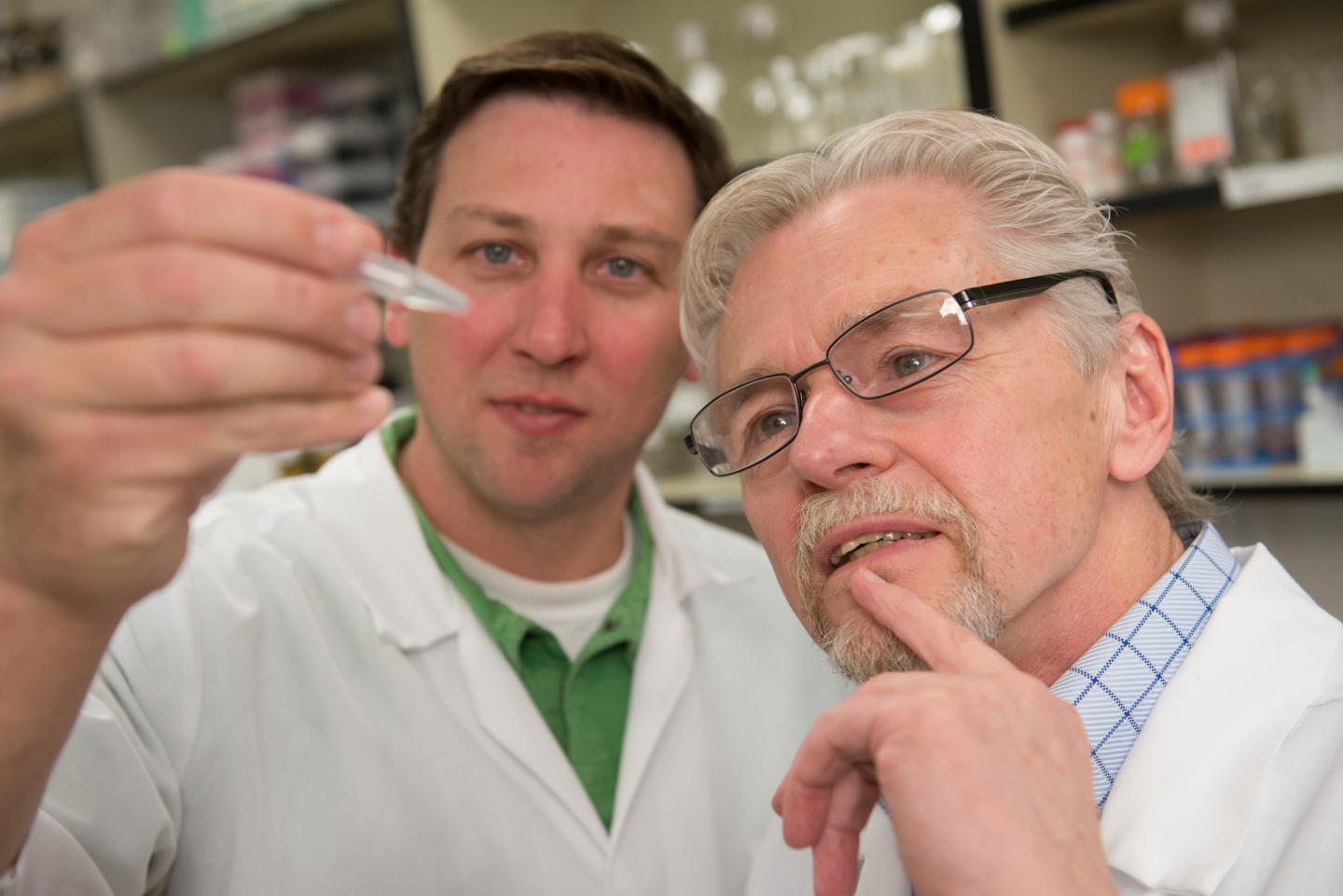
Credit: CSU Photography
Wildlife disease experts at Colorado State University are investigating whether a test developed to detect early-stage chronic wasting disease in deer might also be used to identify the onset of brain disorders, including concussion-related trauma, in people.
In a sign of its potential significance, the research is funded with a $850,000 grant from the U.S. Department of Defense. The agency hopes to find better ways to detect and prevent concussion-related brain injuries, such as chronic traumatic encephalopathy, in U.S. soldiers exposed to munitions blasts in the field.
Prion diseases similar to malfunction in human conditions
Such use of a diagnostic test designed for deer is possible because CWD is in a family of neurodegenerative ailments called prion diseases, characterized by protein misfolding that triggers a cascade of ultimately fatal brain damage. Protein misfolding in prion diseases is strikingly similar to cellular malfunction that occurs in human neurological conditions including concussion, chronic traumatic encephalopathy, Alzheimer's disease and Parkinson's disease, said University Distinguished Professor Edward Hoover, who works in the CSU Infectious Disease Research and Response Network.
"In the last five years, there's been an interest in applying this new technology to other neurological diseases," Davin Henderson, a researcher in the Hoover Laboratory, explained. "Chronic traumatic encephalopathy, or CTE, is similar to prion disease."
CTE, a degenerative disease likely caused by head trauma, has gained significant attention in recent years because of brain injuries among military veterans and dozens of former National Football League players and other athletes.
The CSU team is collaborating on the study with the Center for Cognitive Neurology at New York University's Langone Medical Center, which will provide tissue samples from patients with dementia who donated these tissues to science.
CSU excels in prion research realm
Alan Rudolph, CSU vice president for research, said the new project represents what the university's scientists do best. "The research being conducted out of the Hoover Lab, in conjunction with NYU, highlights CSU's expertise with prion and amyloid disease research," he said. "It demonstrates how CSU is translating important discoveries in animal science for human application in innovative ways."
CSU is renowned for its research breakthroughs on chronic wasting disease, a contagious neurological disease that affects deer, elk and moose: CWD was first identified as a fatal wasting syndrome of mule deer – and as a prion disorder – at CSU research facilities. CSU Professor Terry Spraker also first discovered chronic wasting disease in a captive research herd of elk in Colorado in the 1970s.
The Hoover research team, in CSU's Department of Microbiology, Immunology and Pathology, is leveraging prion expertise to better understand human neurological conditions characterized by protein misfolding. In addition to CWD, prion diseases include bovine spongiform encephalopathy, or mad-cow disease, in cattle; scrapie in sheep; and Creutzfeldt-Jakob disease in humans.
Protein misfolding is like a zombie story
Prions are "misfolded versions of a normal protein we all have," said Hoover, who has overseen CWD research for the last 13 years.
"When this protein minds its own business, it is innocuous to us, and it performs tasks we don't fully understand," he explained. "It's very rich in the brain. But when it misfolds, it coerces or seduces normal proteins to misfold as well, so that leads to an amplification, which spreads in the tissue. Those misfolded proteins somehow damage the nerve cells in the brain, so that gradually, one develops dementia."
It's like a zombie story, Hoover added.
The test that detects CWD at very low levels in the urine, saliva or feces of deer, elk and moose may also be used to detect one of several misfolded proteins found in people with Alzheimer's, Parkinson's, traumatic brain injury and other similar diseases, Henderson said.
Researchers and clinicians are also interested in learning more about the connection between traumatic brain injury and short-term and long-term disorders resulting from concussion.
"We believe that traumatic brain injury causes something to be put into play in the brain that leads to the loss of brain cells over time," Henderson said.
Detecting the progression of these human neurological diseases is key to treating them. "If you can't tell that someone's sick until they have symptoms, it may be too late" to provide an effective treatment, Henderson said.
###
Media Contact
Mary Guiden
[email protected]
970-491-6892
@ColoStateNews
############
Story Source: Materials provided by Scienmag





